Abstract
Guinea pigs were infected with different doses of yeasts of Histoplasma capsulatum or artifically immunized with several concentrations of unextracted yeast cell walls, and then tested in vivo and in vitro for cell-mediated responses to various subcellular fractions of the fungus. Three types of cell-mediated responses were measured, viz., skin test activity, production of migration inhibition factor, and lymphocyte transformation. Positive cutaneous reactions were elicited in animals immunized with 100 or 1,000 mug of cell walls when such animals were skin-tested with cell wall glycoprotein of soluble cytoplasmic substances, whereas animals immunized with 2,000 mug of cell walls did not react significantly greater than unsensitized animals when skin-tested with the same antigens. Histoplasmin did not elicit cutaneous sensitivity in guinea pigs infected with the smallest inoculum, 6 X 10(5) yeast cells, or in animals immunized with cell walls, regardless of the concentration of cell walls used as immunogen. However, hypersensitivity to H. capsulatum could be detected with cytoplasmic substances in animals infected with 6X 10(5). In guinea pigs infected with larger doses, i.e., 10 X 10(7), 15 X10(7), or 20 X 10(7), hypersensitivity could be detected with histoplasmin, cell wall glycoprotein, a ribosome-rich fraction, and soluble cytoplasmic substances. Both cell wall glycoprotein and soluble cytoplasmic substances were functional in migration inhibition factor assays with peritoneal exudate cells from animals immunized with 100 or 1,000 mug of cell walls. The transformation of lymphocytes from infected and artificially immunized guinea pigs in the presence of cell wall glycoprotein and soluble cytoplasmic substances was variable and unpredictable, the lymphocytes from some animls within a given group transforming and those from other animals showing no evidence of stimulation. Moreover, the level of stimulation could not be correlated with the degree of dermal hypersensitivity. These findings suggest that cell wall glycoprotein, and the fractions containing ribosomes and soluble cytoplasmic substances, could be useful antigens in assays for cellular immunity, and warrant further investigation with respect to specificity and active components.
Full text
PDF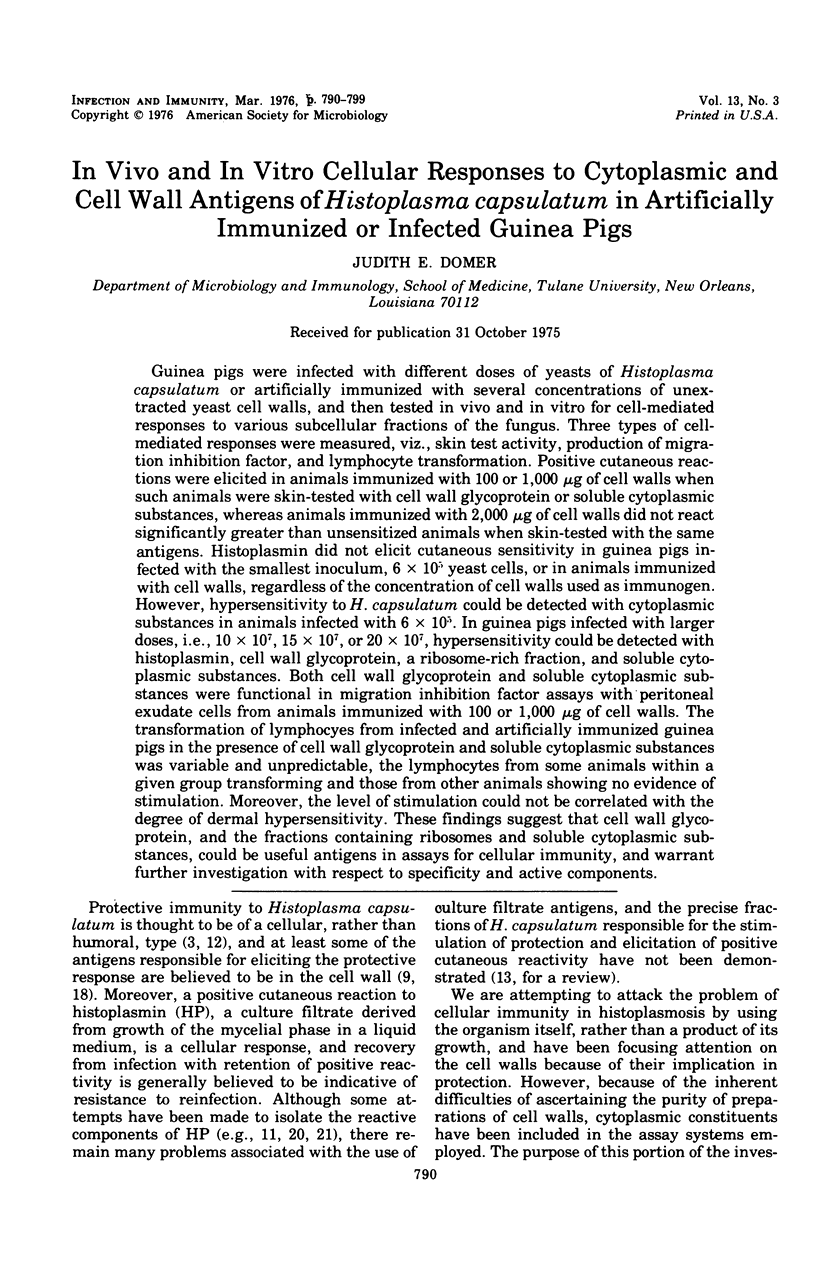
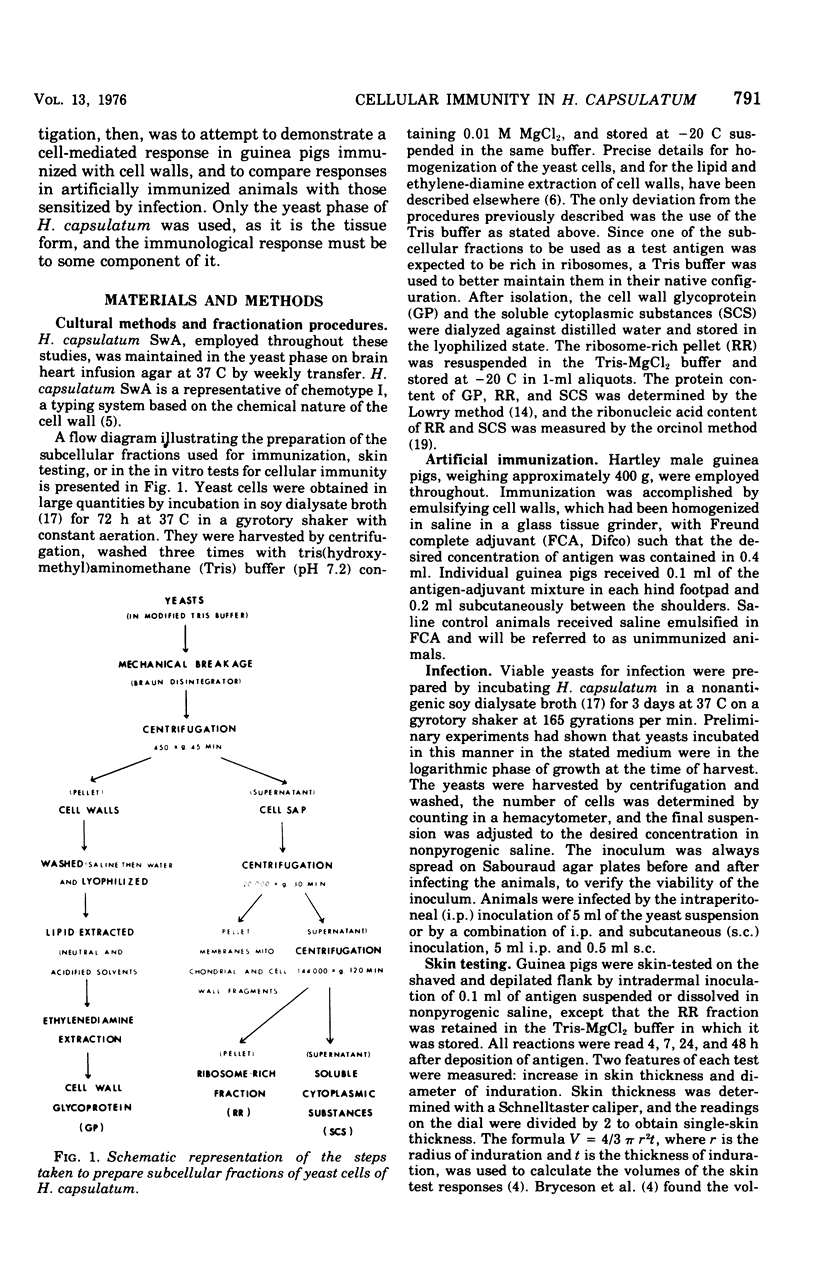

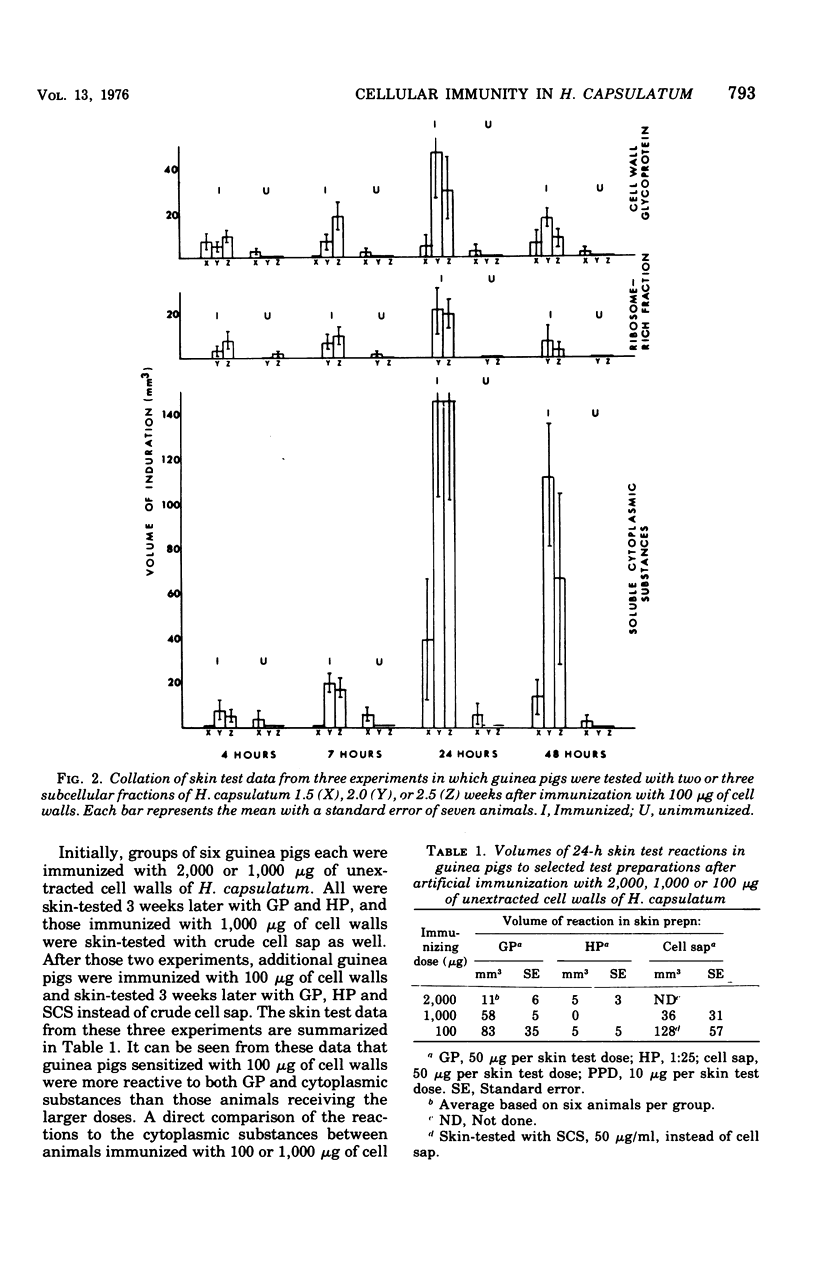
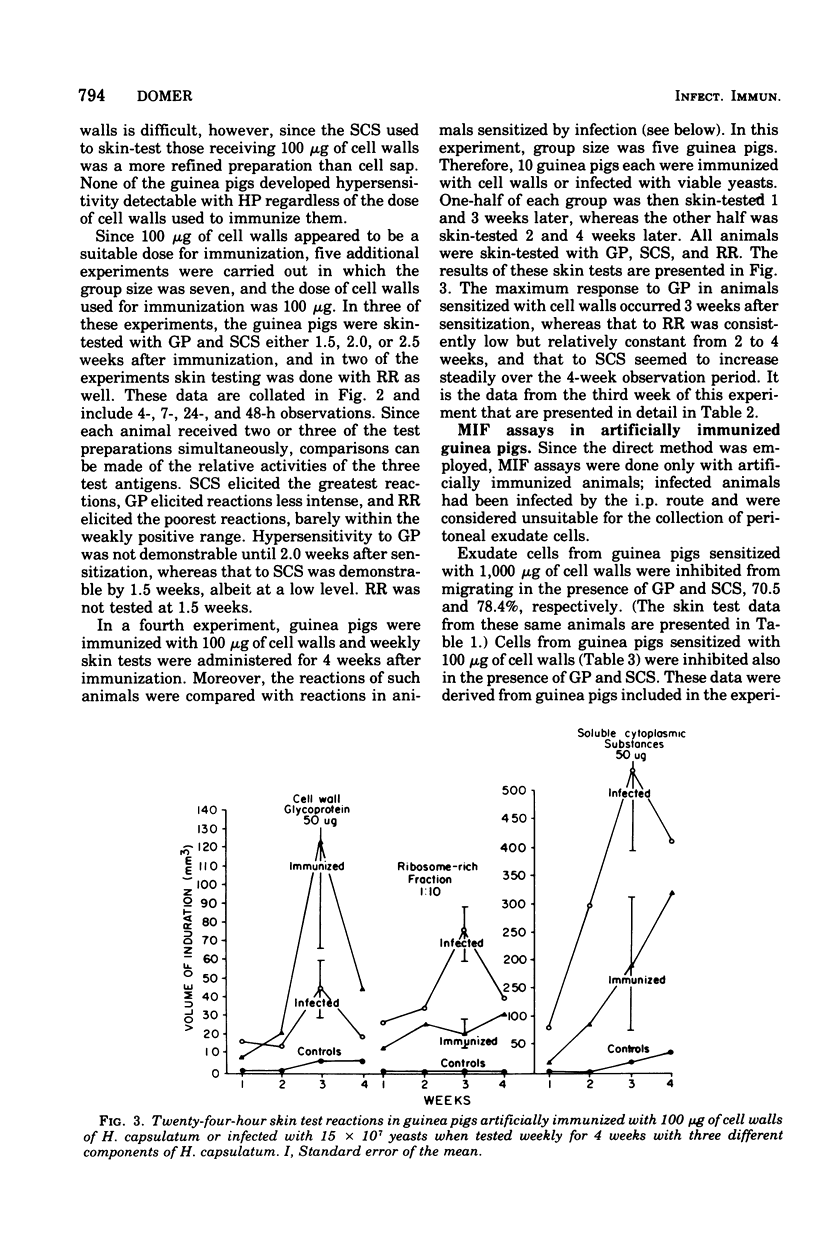
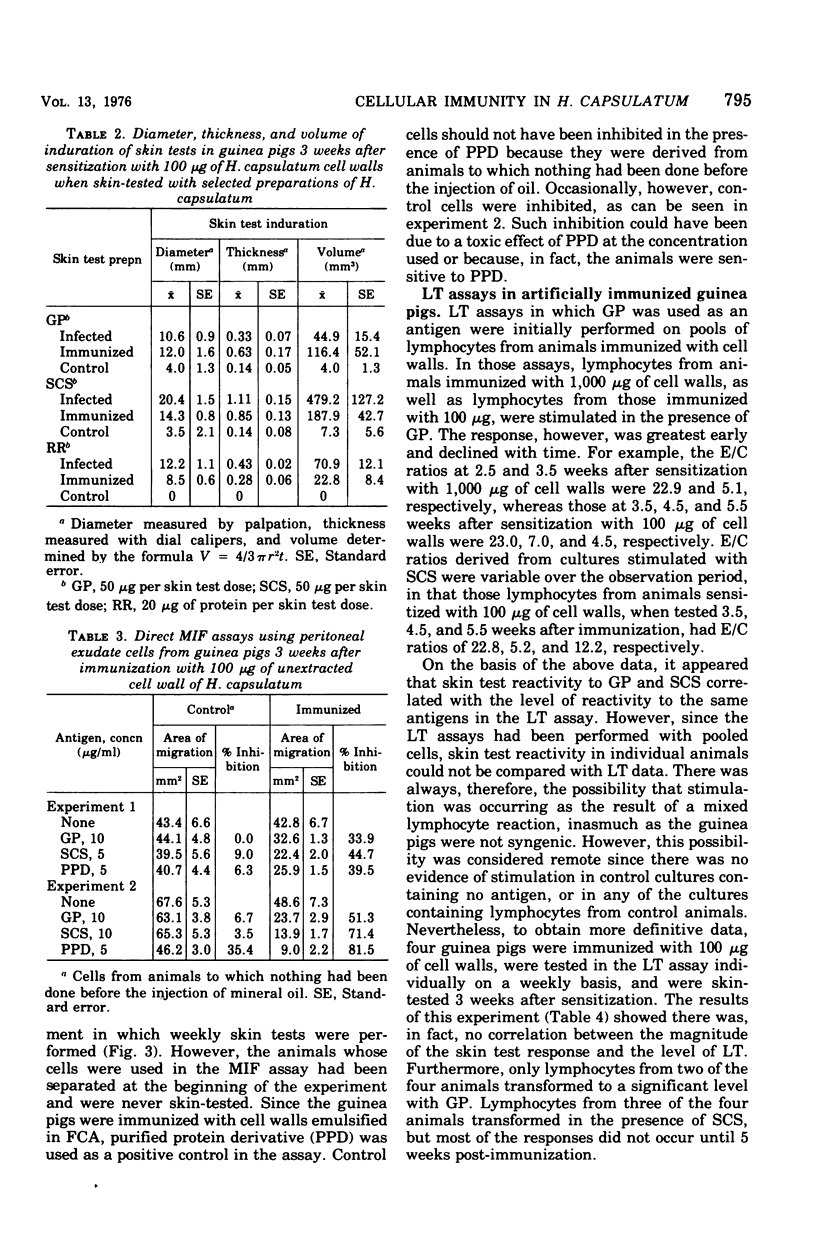
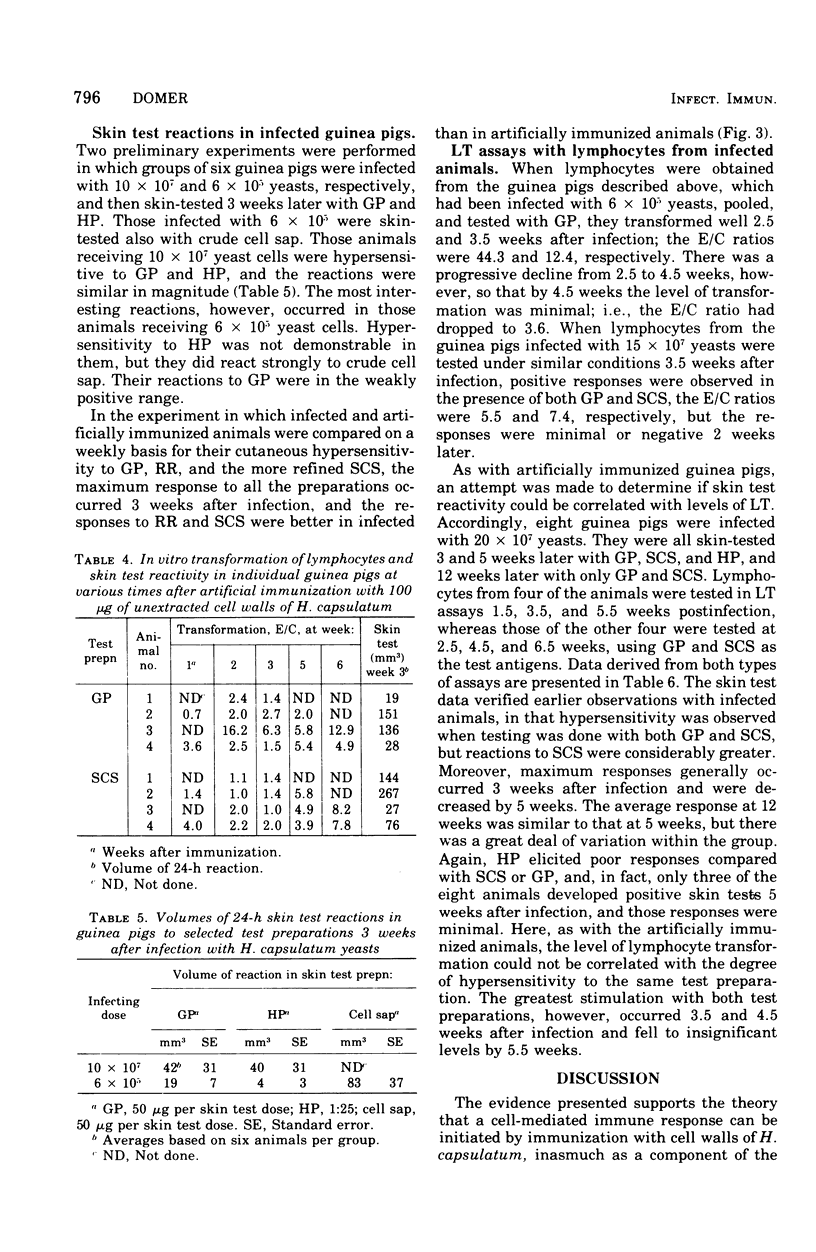
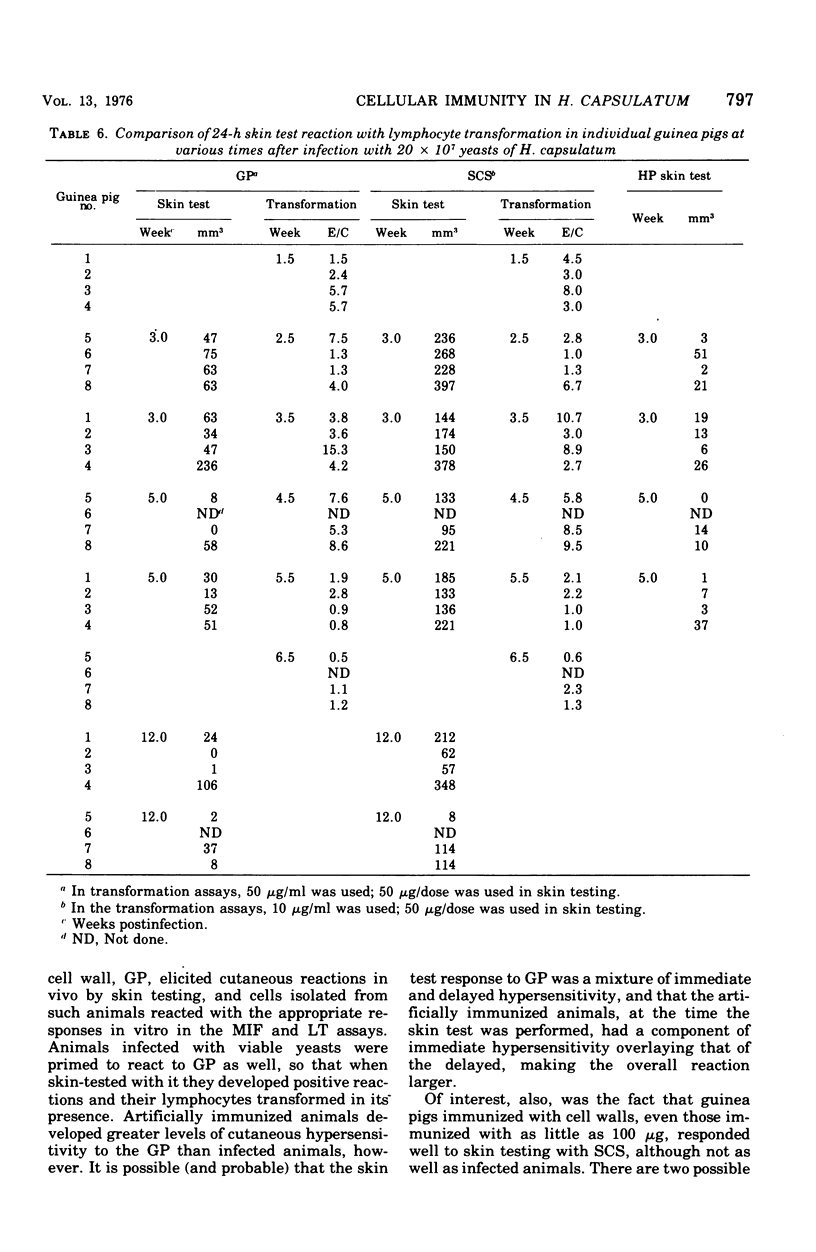
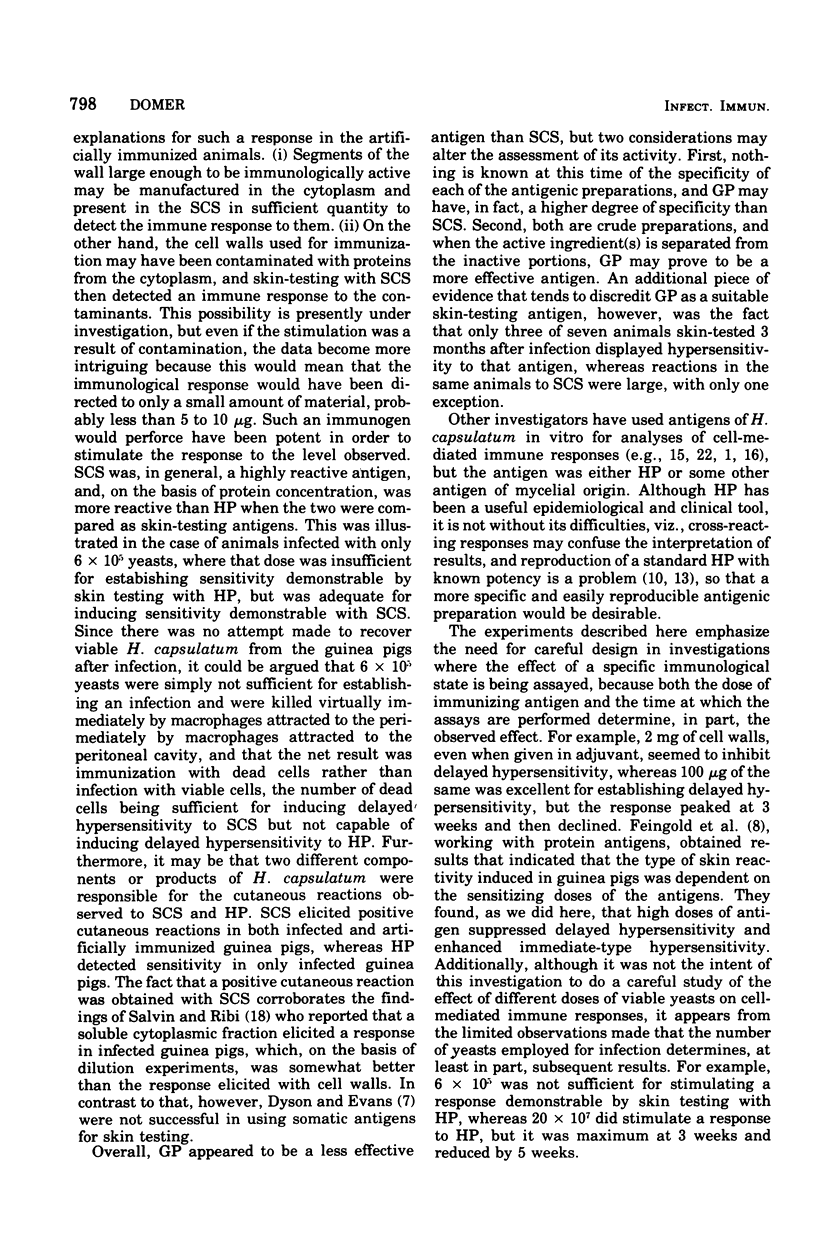
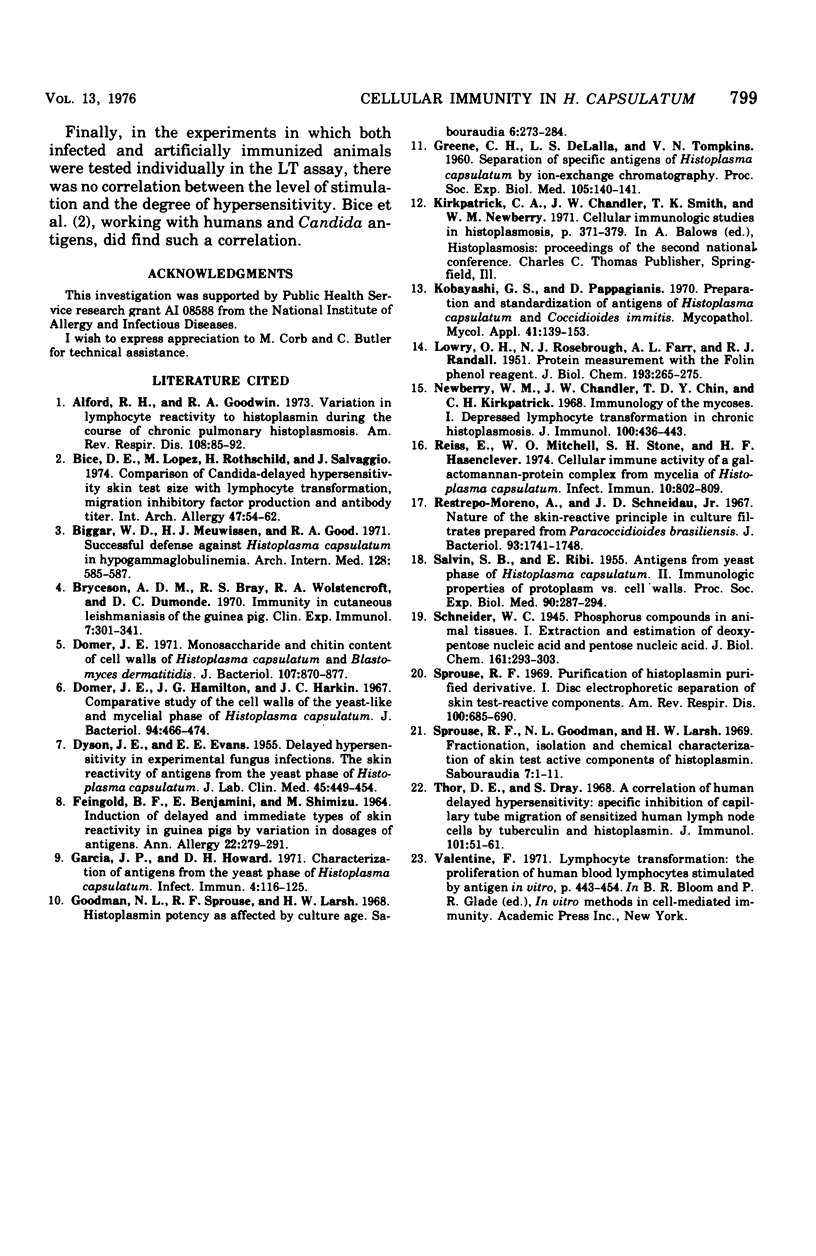
Selected References
These references are in PubMed. This may not be the complete list of references from this article.
- Alford R. H., Goodwin R. A. Variation in lymphocyte reactivity to histoplasmin during the course of chronic pulmonary histoplasmosis. Am Rev Respir Dis. 1973 Jul;108(1):85–92. doi: 10.1164/arrd.1973.108.1.85. [DOI] [PubMed] [Google Scholar]
- Bice D. E., Lopez M., Rothschild H., Salvaggio J. Comparison of Candida-delayed hypersensitivity skin test size with lymphocyte transformation, migration inhibitory factor production and antibody titer. Int Arch Allergy Appl Immunol. 1974;47(1):54–62. doi: 10.1159/000231200. [DOI] [PubMed] [Google Scholar]
- Biggar W. D., Meuwissen H. J., Good R. A. Successful defense against Histoplasma capsulatum in hypogammaglobulinemia. Arch Intern Med. 1971 Oct;128(4):585–587. [PubMed] [Google Scholar]
- Bryceson A. D., Bray R. S., Wolstencroft R. A., Dumonde D. C. Immunity in cutaneous leishmaniasis of the guinea-pig. Clin Exp Immunol. 1970 Sep;7(3):301–341. [PMC free article] [PubMed] [Google Scholar]
- DYSON J. E., EVANS E. E. Delayed hypersensitivity in experimental fungus infections: the skin reactivity of antigens from the yeast phase of histoplasma capsulatum. J Lab Clin Med. 1955 Mar;45(3):449–454. [PubMed] [Google Scholar]
- Domer J. E., Hamilton J. G., Harkin J. C. Comparative study of the cell walls of the yeastlike and mycelial phases of Histoplasma capsulatum. J Bacteriol. 1967 Aug;94(2):466–474. doi: 10.1128/jb.94.2.466-474.1967. [DOI] [PMC free article] [PubMed] [Google Scholar]
- Domer J. E. Monosaccharide and chitin content of cell walls of Histoplasma capsulatum and Blastomyces dermatitidis. J Bacteriol. 1971 Sep;107(3):870–877. doi: 10.1128/jb.107.3.870-877.1971. [DOI] [PMC free article] [PubMed] [Google Scholar]
- FEINGOLD B. F., BENJAMINI E., SHIMIZU M. INDUCTION OF DELAYED AND IMMEDIATE TYPES OF SKIN REACTIVITY IN GUINEA PIGS BY VARIATION IN DOSAGES OF ANTIGENS. Ann Allergy. 1964 Jun;22:279–291. [PubMed] [Google Scholar]
- GREENE C. H., DELALLA L. S., TOMPKINS V. N. Separation of specific antigens of Histoplasma capsulatum by ion-exchange chromatography. Proc Soc Exp Biol Med. 1960 Oct;105:140–141. doi: 10.3181/00379727-105-26037. [DOI] [PubMed] [Google Scholar]
- Garcia J. P., Howard D. H. Characterization of antigens from the yeast phase of Histoplasma capsulatum. Infect Immun. 1971 Aug;4(2):116–125. doi: 10.1128/iai.4.2.116-125.1971. [DOI] [PMC free article] [PubMed] [Google Scholar]
- Goodman N. L., Spouse R. F., Larsh H. W. Histoplasmin potency as affected by culture age. Sabouraudia. 1968 Oct;6(4):273–284. doi: 10.1080/00362176885190551. [DOI] [PubMed] [Google Scholar]
- Kobayashi G. S., Pappagianis D. Preparation and standardization of antigens of Histoplasma capsulatum and Coccidioides immitis. Mycopathol Mycol Appl. 1970;41(1):139–153. doi: 10.1007/BF02051490. [DOI] [PubMed] [Google Scholar]
- LOWRY O. H., ROSEBROUGH N. J., FARR A. L., RANDALL R. J. Protein measurement with the Folin phenol reagent. J Biol Chem. 1951 Nov;193(1):265–275. [PubMed] [Google Scholar]
- Newberry W. M., Jr, Chandler J. W., Jr, Chin T. D., Kirkpatrick C. H. Immunology of the mycoses. I. Depressed lymphocyte transformation in chronic histoplasmosis. J Immunol. 1968 Feb;100(2):436–443. [PubMed] [Google Scholar]
- Reiss E., Mitchell W. O., Stone S. H., Hasenclever H. F. Cellular immune activity of a galactomannan-protein complex from mycelia of Histoplasma capsulatum. Infect Immun. 1974 Oct;10(4):802–809. doi: 10.1128/iai.10.4.802-809.1974. [DOI] [PMC free article] [PubMed] [Google Scholar]
- Restrepo-Moreno A., Schneidau J. D., Jr Nature of the skin-reactive principle in culture filtrates prepared from Paracoccidioides brasiliensis. J Bacteriol. 1967 Jun;93(6):1741–1748. doi: 10.1128/jb.93.6.1741-1748.1967. [DOI] [PMC free article] [PubMed] [Google Scholar]
- SALVIN S. B., RIBI E. Antigens from yeast phase of Histoplasma capsulatum. II. Immunologic properties of protoplasm vs. cell walls. Proc Soc Exp Biol Med. 1955 Oct;90(1):287–294. doi: 10.3181/00379727-90-22012. [DOI] [PubMed] [Google Scholar]
- Sprouse R. F., Goodman N. L., Larsh H. W. Fractionation, isolation and chemical characterization of skin test active components of histoplasmin. Sabouraudia. 1969 Feb;7(1):1–11. doi: 10.1080/00362177085190021. [DOI] [PubMed] [Google Scholar]
- Sprouse R. F. Purification of histoplasmin purified derivative. I. Disc electrophoretic separation of skin test-reactive components. Am Rev Respir Dis. 1969 Nov;100(5):685–690. doi: 10.1164/arrd.1969.100.5.685. [DOI] [PubMed] [Google Scholar]
- Thor D. E., Dray S. A correlate of human delayed hypersensitivity: specific inhibition of capillary tube migration of sensitized human lymph node cells by tuberculin and histoplasmin. J Immunol. 1968 Jul;101(1):51–61. [PubMed] [Google Scholar]


